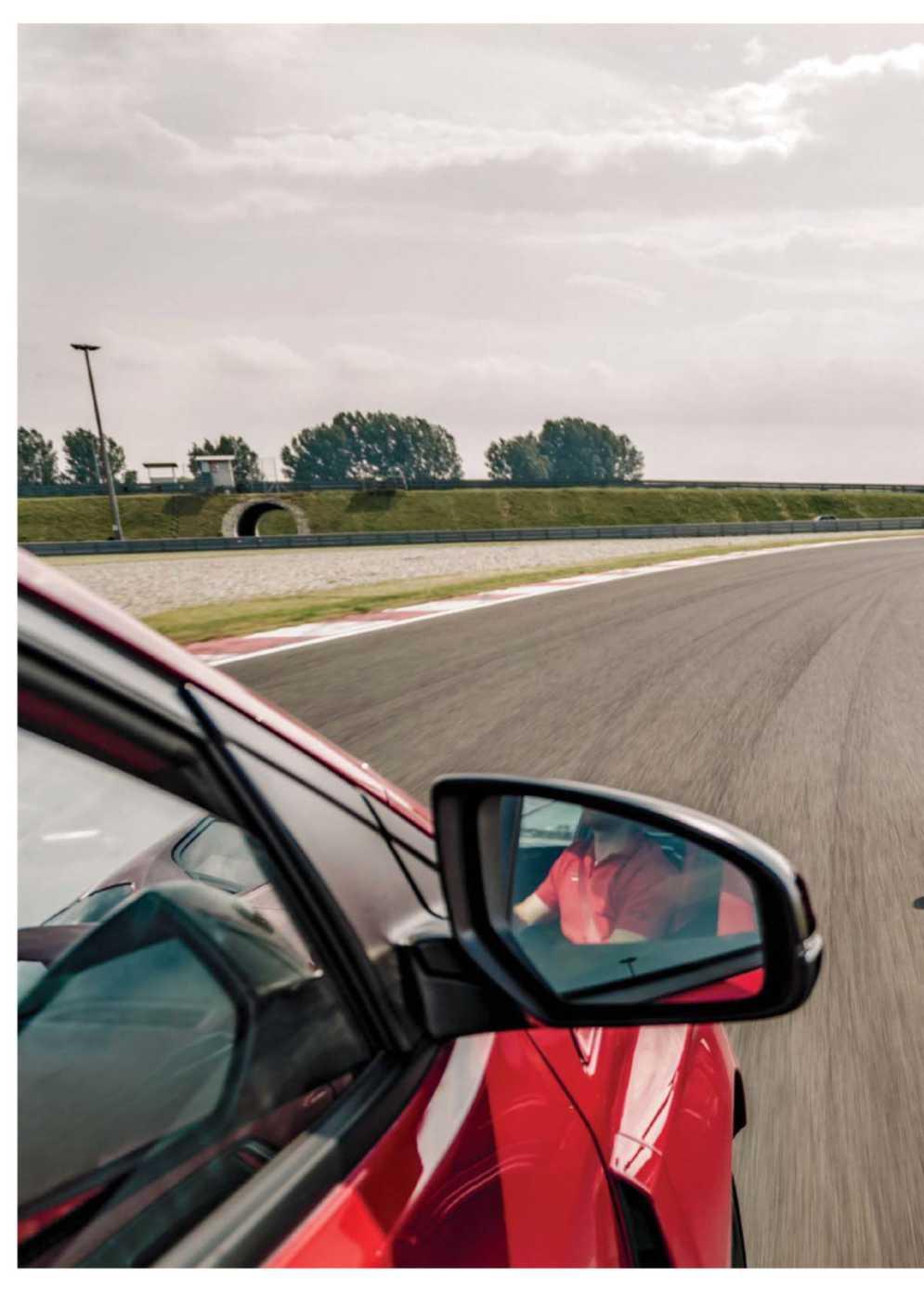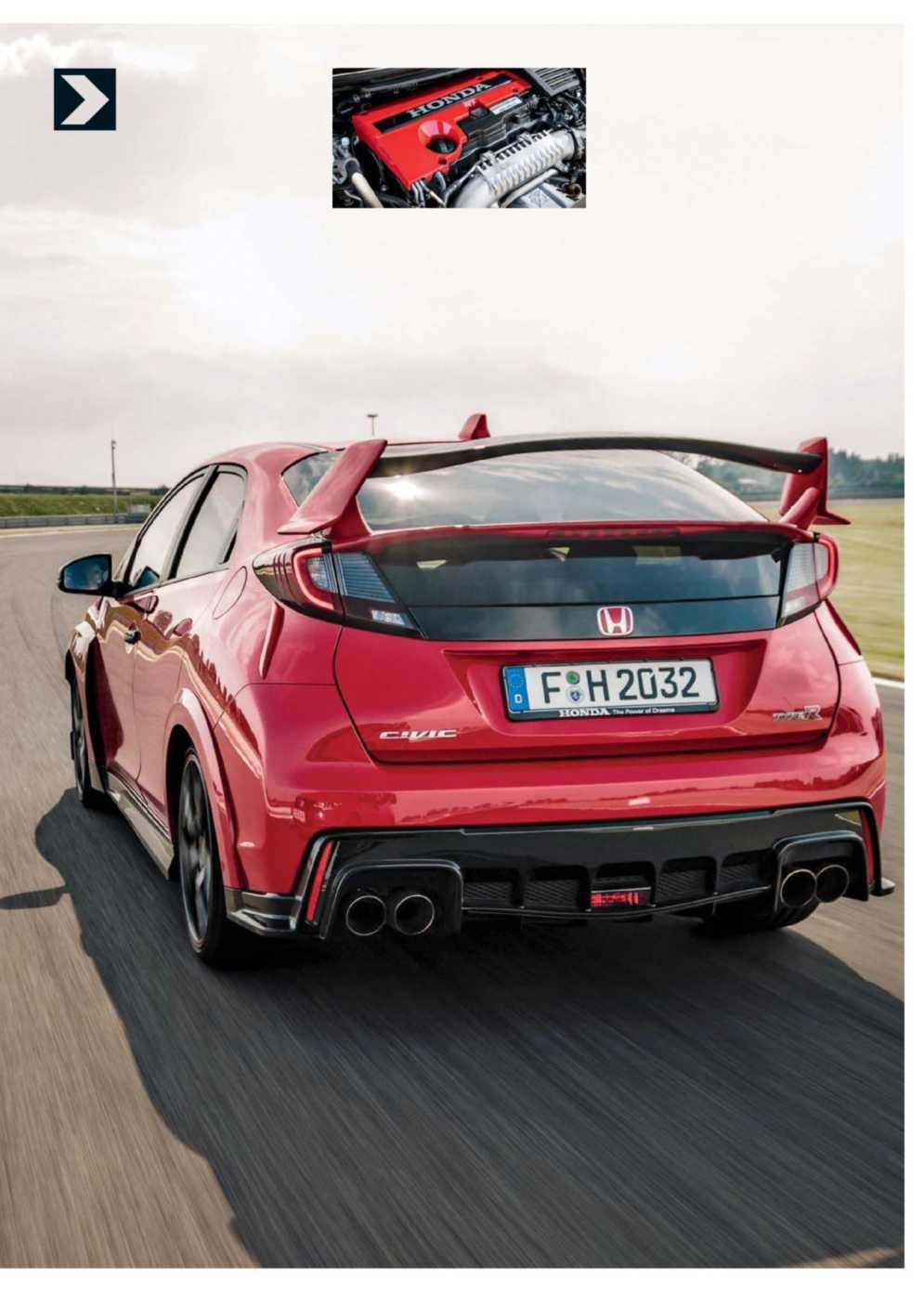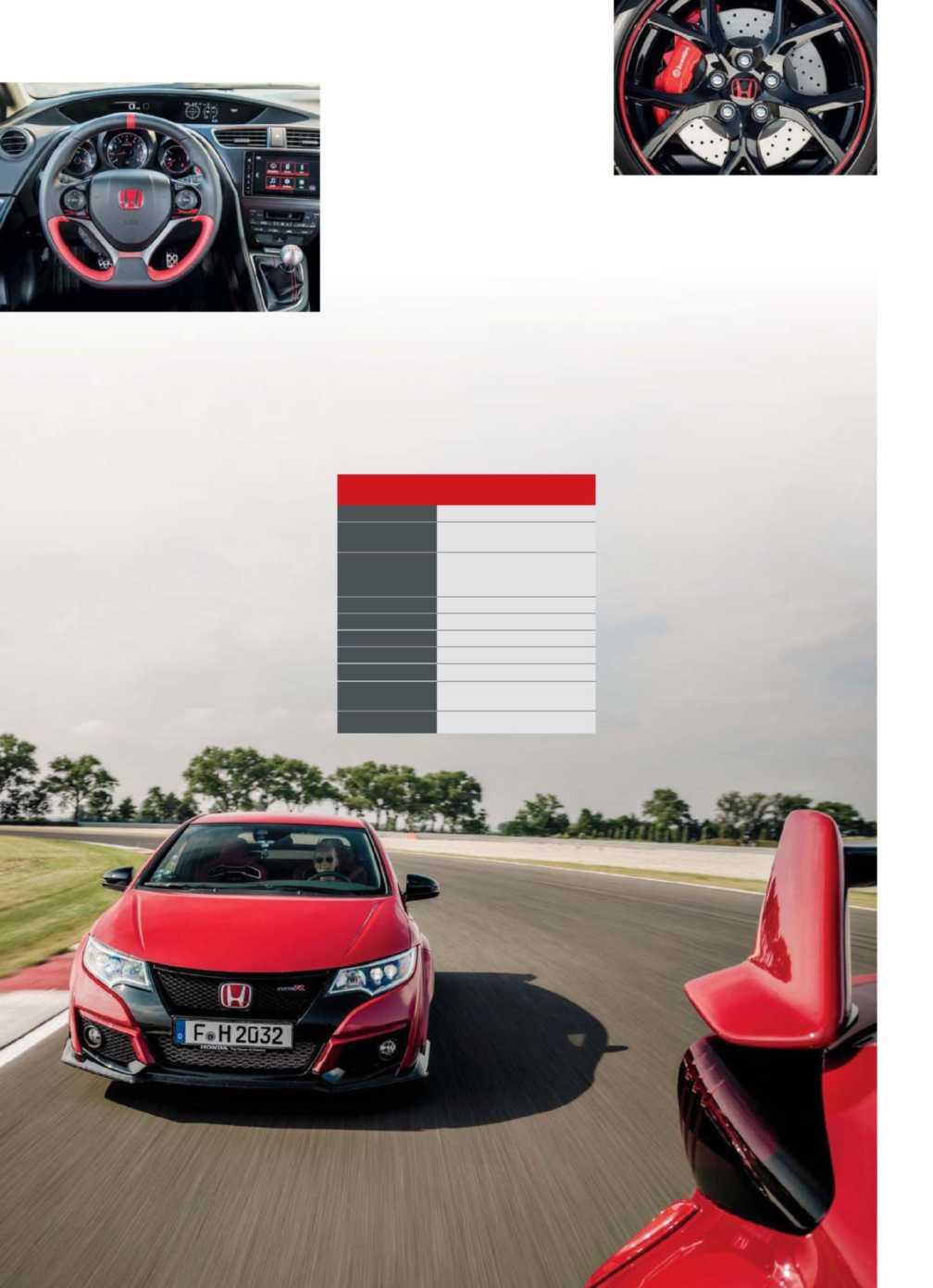
5 minute read
IT’S TURBO TIME 2015 Honda Civic Type R
from I6 gyno 9 bump
by Thomas Swift
FIRST DRIVE | 2015 Honda Civic Type R (European Spec) IT’S TURBO TIME
HONDA IS PLAYING CATCH-UP—AND FAST
Advertisement
Words Jason Cammisa
It’s perhaps a bit unfair, but we tend to have high expectations of Honda. Back in the day, the automaker regularly conjured up impossibly elegant, simple solutions to engineering problems that other companies could only fix by adding complexity. Each invention would be armed with an abbreviation (CVCC, VTEC, SH-AWD, for example) that would change the automotive world.
These days, Honda’s ingenuity has slowed to a trickle, mostly following rather than leading. The company, which hasn’t used a turbo in our market since the 2007-2012 Acura RDX, is now following the rest of the industry down the path of turbocharging for fuel economy. Our first chance to experience its new blown engine was in the over-the-top, juvenile-in-all-the-right-ways, but-don’t-get-too-excited-because-this-one’snot-coming-to-the-U.S.A. Civic Type R.
With a wing big enough to serve a fivecourse meal on, this five-door hatch looks the absolute business. And with 306 horses crammed under the hood, it means business, too. The Ohio-built twin-cam 2.0-liter has VTEC on the exhaust side and variable phasing on both cams. The four-pot’s fuel is direct-injected, its air force-fed via a single-scroll turbocharger. Its power peak occurs at a lofty (for a turbo) 6,500 rpm, 500 short of the red mark on the tachometer, and given enough time for the turbo to spool, it’ll pump out a max of 295 lb-ft of twist at any point between 2,500 and 4,500 rpm.
Those are big numbers—especially because it all goes to the front wheels. A helical limited-slip differential wards off one-tire fire, and a six-speed manual transmission ensures some driver involvement in the process. Honda’s Dual-Axis front struts, which are similar in concept to Ford’s RevoKnuckle and GM’s HiPer Strut, minimize torque steer, and huge (13.8-inch) vented and cross-drilled rotors clamped by four-piston Brembo calipers punctuate the front end. In the back? Regular ol’ solid discs on a twistbeam suspension. Hey, this is a front-heavy
PRAISE THAT SPOILER This Euro-market Civic isn’t coming to the U.S., but the turbo Type R is a sign that performance is back at Honda.

subcompact—all the magic happens up front.
Adaptive dampers help keep body motions taut without ruining the ride, unless you choose the sport mode (called +R), which instantly fills the dampers with sand. The resulting pogo-like ride allegedly helped obtain a scorching 7-minute, 50.63-second lap of the Nürburgring Nordschleife—a record for a production front-drive car. We suspect the driver’s pancreas ruptured at some point during that lap, but we don’t question the time.
The Type R is seriously quick, with a conservative-sounding claim of 0 to 62 mph in 5.7 seconds. Judging how hard our Civic was still pulling at an indicated 160 mph, we’ve no question it can achieve its 167-mph stated max, and with actual downforce, say its engineers. Go for the brakes, though, and things get seriously squirrely. The Civic’s rear end walks around when unloaded, resulting in unexpected and unwelcome Zumba moves from its winged butt.
The rear-end instability is likely a side effect of the R’s insanely quick turn-in. The Civic throws itself into corners like it’s going for the kill, almost like a Ford Focus ST does. Unfortunately, that enthusiasm then fades in favor of resolute, unrelenting understeer. None of which you feel through the steering wheel. Some torque steer would have been a worthwhile trade-off for any information coming back through the rim, and we’d have gladly sacrificed ultimate grip for less frontend plow.
The helical diff performs miracles, putting down ungodly amounts of power, even in corners. The engine is vocal, filling the cabin with a vacuum-cleaner soundtrack, the occasional turbo whoosh, and unfortunate exhaust boom at highway speeds.
Despite a specific power output of more than 150 horsepower per liter from an engine with just one single-scroll turbo, the R doesn’t suffer from the kind of turbo lag that can ruin your commute. Keeping the revs up minimizes the lag, and doing so means

2015 Honda Civic Type R
BASE PRICE $39,000 (est, U.K.) VEHICLE LAYOUT Front-engine, FWD, 4-pass, 4-door hatchback ENGINE 2.0L/306-hp/295-lb- turbocharged DOHC 16-valve I-4 TRANSMISSION 6-speed manual CURB WEIGHT 3,050 lb (mfr) WHEELBASE 102.6 in L X W X H 172.8 x 73.9 x 57.7 in 0-62 MPH 5.7 sec (mfr est) EPA CITY/HWY/ Not rated COMB FUEL ECON ON SALE IN U.S. Never shifting a lot—and that’s the best part of driving the Type R. Its shifter is perfection, with fabulous short-throw shifts and the sort of weighting precision that only Honda seems able to master.
So what’s all this about Honda not blowing us away with its blown hatch? If this Civic Type R had come out a decade ago, it would have left us speechless. Today, it just seems like … everything else. The Ford Fiesta ST showed us that a front-drive car with a twist-beam rear suspension can handle like a neutral race car. The Mercedes GLA45 AMG set the power bar for little four-cylinders. The Volkswagen GTI manages communicative steering without torque steer. And the forthcoming Ford Focus RS with its torquevectoring rear diff is about to show the world that you can drift a hot hatch.
The Civic Type R doesn’t add to that list. It offers no real innovation—not a single new acronym, even!—and it doesn’t make us stand back and say “oh my” like the first time we experienced VTEC. Or SH-AWD. Or, certainly, anything with a Type R badge. That’s OK. We’ll be seeing the new 10th-generation Civic any day now. It’s coming to the U.S. with a hatchback and in Si and, eventually, Type R form, too. This is all good news, and Honda has enough time to engineer some of that good old Honda OMG into the Type R we’ll get here. Q



